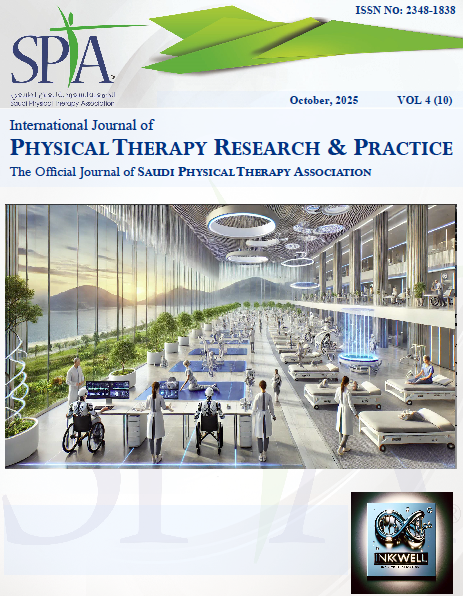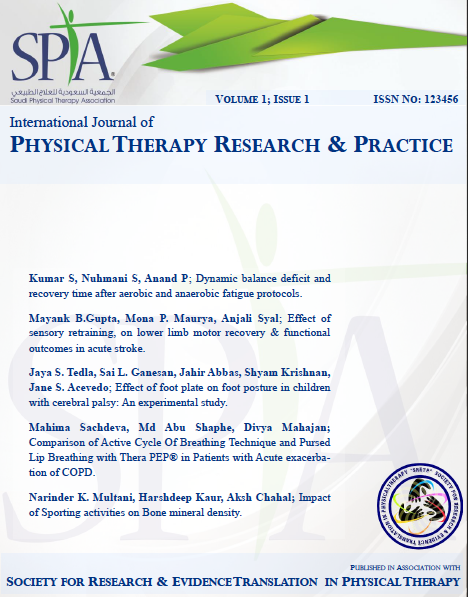Misdiagnosis of Greater Trochanteric Fracture in a Young Adult: A Case Report
DOI:
https://doi.org/10.62464/mxnhjq62Keywords:
differential diagnosis, orthopedic, fractures, greater trochanter, MisdiagnosisAbstract
Background: Misdiagnosis remains a major clinical challenge, even when patients are initially assessed by multiple healthcare providers. Musculoskeletal injuries, particularly hip trauma, require rigorous screening, careful differential diagnosis, and the use of appropriate imaging. Case Presentation: A 26-year-old Bahraini male developed acute left hip pain following a fall from a horse. Initial emergency department evaluation, including plain radiographs, did not reveal a fracture, and he was treated conservatively with analgesics and NSAIDs. Despite repeated consultations, his pain persisted, and he was referred to physiotherapy with a provisional diagnosis of “hip pain.” During physiotherapy assessment, several red flags were identified, including a traumatic mechanism of injury, persistent pain, limping gait, and lack of improvement with prior management. Further imaging confirmed a fracture of the greater trochanter fracture.
Discussion: Greater trochanteric fractures are rare and frequently overlooked on plain radiographs. MRI is considered the gold standard for detecting occult hip fractures. Early recognition is essential, as inappropriate treatment—such as physiotherapy under a misdiagnosed label—may result in fracture displacement, prolonged disability, or surgical intervention. Conclusion: This case highlights the importance of independent diagnostic evaluation, even when patients arrive with prior referrals. Comprehensive screening and timely imaging (if needed) are critical to avoid misdiagnosis and ensure optimal patient outcomes.
References
Alvarez, C., Gómez, R., & Martínez, P. (2025). Surgical management of intertrochanteric fractures with occult extension: A clinical update. Journal of Orthopaedic Trauma Care, 39(2), 115–123.
Feldman, F., & Staron, R. B. (2004). Magnetic resonance imaging of hip trauma: The role of MRI in occult injuries. Skeletal Radiology, 33(11), 632–638.
Goodman, C. C., Heick, J., & Lazaro, R. T. (2018). Differential diagnosis for physical therapists: Screening for referral (6th ed.). Elsevier.
Kim, Y., Lee, Y. K., Kim, T. Y., Ha, Y. C., & Koo, K. H. (2021). MRI diagnosis of occult hip fractures: Clinical implications for management. Clinics in Orthopedic Surgery, 13(2), 177–183.
Lalonde, F., Beaulé, P. E., & Roussignol, X. (2010). Diagnostic challenges in suspected hip fractures: A review of clinical and radiological pitfalls. Emergency Radiology, 17(5), 377–385.
Learch, T. J., & Pathria, M. N. (2000). Imaging of isolated greater trochanter fractures: Clinical significance and pitfalls. American Journal of Roentgenology, 174(2), 421–425.
Lubovsky, O., Liebergall, M., Mattan, Y., Weil, Y., & Mosheiff, R. (2005). Early diagnosis of occult hip fractures: MRI versus CT scan. Injury, 36(6), 788–792.
Mayne, I. P., Wasserstein, D., Henry, P. D., Paterson, J. M., Jenkinson, R. J., & Kreder, H. J. (2020). The epidemiology and outcomes of trochanteric fractures: A population-based study. The Bone & Joint Journal, 102-B(3), 313–319.
Ren, Y., Zhang, L., & Chen, W. (2019). Diagnostic limitations of X-ray and CT for isolated greater trochanter fractures: The role of MRI. Journal of Orthopaedic Surgery and Research, 14(1), 220.
Siu, A. L., Penrod, J. D., Boockvar, K. S., Koval, K., Strauss, E., Morrison, R. S., & Magaziner, J. (2006). Early ambulation after hip fracture: Effects on function and mortality. Journal of the American Geriatrics Society, 54(9), 1355–1361.
Suzuki, T., Matsumoto, T., & Hiraoka, H. (2011). The risk of fracture displacement with early functional exercise in greater trochanter fractures. Clinical Orthopaedics and Related Research, 469(12), 3321–3327.
Thurston, T. J., Brown, D. R., & Patel, A. (2018). Outcomes of non-operative management for isolated greater trochanteric fractures. Injury, 49(6), 1142–1147.

Downloads
Published
Issue
Section
License
Copyright (c) 2025 International Journal of Physical Therapy Research & Practice

This work is licensed under a Creative Commons Attribution-NonCommercial-NoDerivatives 4.0 International License.




